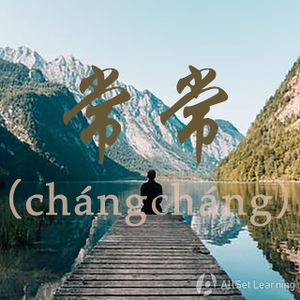Difference between revisions of "Comparing "changchang" and "jingchang""
Jacobleeliu (talk | contribs) |
|||
| Line 73: | Line 73: | ||
[[Category:grammar comparison]] | [[Category:grammar comparison]] | ||
| + | {{HSK|HSK5}} | ||
{{Basic Grammar|常常|B1|常常 vs. 经常|我 <em>不 常</em> 运动 ,我 需要 <em>经常</em> 运动 。|grammar point|ASGE8FLP}} | {{Basic Grammar|常常|B1|常常 vs. 经常|我 <em>不 常</em> 运动 ,我 需要 <em>经常</em> 运动 。|grammar point|ASGE8FLP}} | ||
{{Rel char|经常}} | {{Rel char|经常}} | ||
Revision as of 09:58, 12 April 2019
-
Level
-
Similar to
-
Used for
-
Keywords
Both 常常 (chángcháng) and 经常 (jīngcháng) are adverbs expressing the idea of "often," though their usage differs in some small details.
Contents
Used as an Adverb
常常 and 经常 both can be used to express frequency, meaning "often," and that the time between each instance something happens is very short. In this case, they are interchangeable.
Structure
常常 / 经常 + Verb
Examples
- 我 常常 收到 垃圾 短信 。I often receive spam texts.
- 你们 经常 加班 吗 ?Do you guys often work overtime?
- 他们 常常 吵架 。They often argue.
Neither 常常 nor 经常 can be placed before the subject:
- 常常 他 不 吃 早饭 。
- 经常 他 不 吃 早饭 。
- 他 经常 不 吃 早饭 。He often skips breakfast.
Note that 常 (by itself) is used for future frequent actions in colloquial Chinese.
- 常 来 玩 !Come hang out often!
- 常 联系 !Let's keep in touch!
Used as an Adjective
Although not so commonly used in this way, 经常 can also be used as an adjective referring to things that happens very frequently. 常常 can't be used this way.
A simple example:
- 她 忘 带 钥匙 是 经常 的 事情 。It's a regular thing for her to forget to bring her keys.
Negative Form
经常 and 常常 can share the same negative form 不常. You can also simply use 不 to negate both 经常 and 常常, although 不常常 is not super common.
A few examples:
- 他 不 常 抽烟 。He doesn't smoke very often.
- 我 妈妈 不 经常 网购 。My mother doesn't often shop online.



